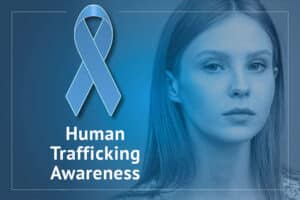What is a restraining order?
A Restraining Order is a court order intended to protect you from further harm from someone who has hurt you. (There are several different kinds, but the Domestic Abuse order information is included here.) There is no cost to file a Domestic Abuse Restraining Order.
What does a Restraining Order do?
If you are a victim of domestic violence, a judge can sign an Order of Protection that requires the abuser to obey the law. The order is very specific in as far as what the abuser can and can’t do.
- The abuser can be ordered not to have any contact with you, in person or by phone, at home, work, or almost anywhere you ask the court to put in the order. The order against contact may also protect other people in your family.
- The court can order the abuser to leave the house or apartment that you and the abuser share; even if it is in the abuser’s name.
- The judge may order the abuser to receive professional domestic violence counseling or tell the abuser to get evaluated.
- The judge can order the police to escort the abuser to remove personal items from the residence, or shared place of business, so that you are protected by the police during any necessary contact.
- The judge has the power under the law to order anything else that will help to protect you, as long as you agree to it.
- Keep in mind that a Protective Order is just a piece of paper – not a bullet proof vest. You still need to be careful!
How long does the restraining order last?
When you first get protection under the law, it is a Temporary Restraining Order (TRO). You must return to court on the date indicated in the TRO — which will be about 10 days after you file. Both you and the abuser will be asked to appear in court on that date. During the 10-day period, the police or sheriff’s department will serve the abuser with a copy of the order so the abuser will know when the hearing is scheduled. In Wisconsin, a protective order is good for up to four years.
What happens once a restraining order is in place?
Both you and the abuser will have the opportunity to tell the judge what happened between you. You are allowed to bring a lawyer to this hearing, but it is purely your choice. You may also have a domestic violence advocate sit in on the hearing for support. At the end of this hearing, the judge will determine if you should receive a final order, for how long, and under what conditions.
What happens after court?
The court will give you a copy of the order. Be sure to ask someone before you leave the court if there is anything you don’t understand. Carry the order with you at all times – keep copies at home, at work, on your person and in your car. If the abuser does not obey the order, call the police. The police have to arrest an abuser who violates any part of an order that protects you from threats or violence.
To file, you need to fill out three forms:
Petition for Temp Order & Hearing (form CV-402)
Temp Order & Notice of Hearing (form CV-403)
Injunction (form CV-404)
The petition requires a written statement. For tips, click the link below:
Tips for Writing a Statement
Some additional information can be found here:
Restraining Order FAQs
Remember — trained advocates at Solutions Center can assist you with filling out the paperwork and accompanying you to court.
Guys Who Grill
Sponsor the EventRegister Your Team$ Buy Tickets Online Guys Who Grill Event Details Local teams grilling for a cause, uniting against homelessness and domestic violence.…
Help For The Homeless – Hygiene Drive
Supporting Our Homeless Neighbors: A Community Effort At the Solutions Center, Fond du Lac, we understand the challenges faced by our homeless community. Our mission…
Human Trafficking Awareness Month
January is Human Trafficking Prevention Month (Human Trafficking Awareness Month). What is Human Trafficking? The U.S. Department of Justice defines human trafficking as a crime…




